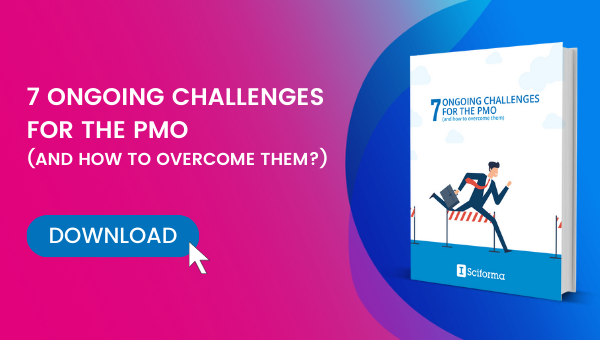Standardization and consistency are paramount in project-related activities. Hence, the importance for PMOs and other project and portfolio management professionals to select the appropriate project management methodology — or combination of methodologies.
The most widely used PPM methods include:
- Waterfall
- Critical Chain Project Management (CCPM)
- Agile
- Scrum
- Kanban
- Six Sigma
- And more
Project management is a process-oriented discipline, and every PPM professional is aware of the importance of selecting the right methodology to run their projects in a way that’ll get deliverables ready on time and within budget. Some lines of business and some types of projects naturally lend themselves to certain management methodologies. When there is no obvious choice, PMOs or project managers must make the decision.
Here is an overview of some of the most widely used project management methodologies and what they’re best suited for in order to help you choose the right methodology for you and your projects.
Waterfall Project Management
The Waterfall methodology is the historical approach to the management of project delivery and it may well be the most straightforward. As the name suggests, the Waterfall process follows a linear downward flow until ultimate delivery. Projects are broken down into several discrete phases (typically requirement collection, system design, implementation, testing/verification, and maintenance) that are to be completed sequentially, with no option to revisit a closed phase. Although the Waterfall approach may be blamed for being somewhat rigid, it provides a well-structured framework to project populations and is well-suited to the needs of large construction and manufacturing projects involving hefty material or hardware investment (because changing your mind after laying the foundations of a building sounds impractical, doesn’t it?). The Waterfall process is usually associated with the famous Gantt charts for project planning and scheduling.
Critical Chain Project Management (CCPM)
The Critical Chain method is an alternative approach to managing the risk and change that are inherent to any project. CCPM places focus on the strategic resources needed to complete the project and strives to balance them out optimally. Instead of sequencing tasks in a predefined order and setting fixed dates for phase completion (like in Waterfall), the Critical Chain method estimates the likely duration of the tasks and activities in a project in order to find out the most efficient concatenation. The “critical chain” thus obtains factors in any task or resource dependencies and helps to identify the resources that are under the greatest strain at each phase in order to enable preventive or corrective action.
This constraint-based method can be highly effective in optimizing the performance of small to mid-sized projects.
Agile Project Management
Agile is perhaps the most popular method in today’s PPM spheres. Furthermore, agile practices are usually opposed to the Waterfall methods inasmuch as they place a premium on speed and flexibility (while Waterfall emphasizes predictability and replicability). Moreover, agile can basically be described as a way for small, empowered project teams to self-organize in order to deliver on changing project requirements. Here are a few of the guiding principles of Agile delivery: adaptive planning, involvement of customers or project/product owners, adaptability to change in project scopes, collaborative work… and much more.
Agile originated in the software development world and has since gained huge traction across a wide range of various industries and lines of business, from theoretical research to consumer goods. Overall, Agile is a method of choice for organizations and projects in need of a responsive, fast-paced, and adaptable schedule.
Scrum
Introduced in the 1980s, the Scrum approach is one of the highest-profile avatars of Agile.
Scrum breaks down project work into short iterative “sprints” (typically over two-week cycles and with short “daily scrum meetings”) led by a so-called “Scrum master”. Scrum works best for small cross-functional teams (a dozen people at most) and challenges the traditional approach to resource management since, in a Scrum framework, team members may self-assign to the tasks of their choosing. Like other Agile methodologies, Scrum originated in the realm of software development but has gradually gained traction and popularity across all kinds of industries. The signature tool of Scrum teams is the Kanban board.
Kanban
The Kanban management system bears a Japanese name derived from that of the cards used to track production within a factory. In a project management context, Kanban visually helps manage project workflows by materializing tasks and their status on a shared billboard. You’ve probably seen these walls with multiple colorful Post-it notes: that’s Kanban. Because it makes project progress clear to all participants, Kanban helps improve collaboration and communication, especially in Scrum teams. With digitalization, virtual “walls” replaced physical billboards. And those “walls” transcend locations and time zones.
Lean Project Management
Originating from the manufacturing industry, Lean methods focus on key processes in order to optimize their outcomes over time. Lean reviews different technologies and processes with a view to removing unnecessary steps, waste, and inefficiencies in order to streamline production flows and ultimately maximize user or customer value. As an essentially user-value-oriented approach, Lean is a preferred approach for start-ups.
Six Sigma
In a similar vein, Six Sigma applies quality control and quality management skills and techniques to project management. The idea is to identify inefficiencies and defects in order to improve processes by minimizing variability in project management processes. Six Sigma draws heavily on statistical modeling. This shows in the method’s name; the Greek letter sigma commonly represents the standard deviation in mathematics). A trademark of Motorola, Six Sigma requires a certification to practice, and is thus most common in large enterprises.
And more…
Other less widespread (but no less useful) project management methodologies include:
- Event Chain Methodology (ECM), a variant of critical chain project management that focuses on the identification and management of any events impacting project schedules.
- Adaptive Project Framework (APF), a more pragmatic take on Agile methods that recognizes change in projects not as a necessary evil, but as a force for optimization.
- Extreme Programming (XP), a form of Agile software development that involves customer requirements very actively in the development cycle and release process.
- PRINCE2, which stands for Projects IN Controlled Environments, divides large projects into smaller stages in order to make them easier to control and manage. PRINCE2 is more flexible and adaptive than Waterfall, as it is tailorable to the needs of a particular project.
- Finally, more and more of today’s organizations embrace hybrid project management models mixing several of the above.
Are you interested in PPM methodologies? Here are a few suggested reads:
- Late in Your New Product Development? Achieve On-Time Delivery with CCPM
- Speed is King: Building Agility into Effective Planning and Delivery Practices
- 3 Ways to Incrementally Adopt Agile








Benoît Boitard
Benoît has multiple professional experiences, working in particular as a digital strategy consultant, both in emerging start-ups and in large companies. These diverse experiences have imbued him with a global vision of project management in traditional and agile working environments.